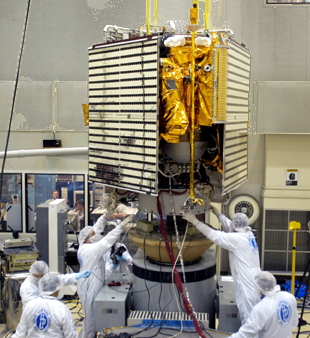
Goddard Space Flight Center, Greenbelt, Maryland 20771
ENGINEERING COLLOQUIUM
Monday, February 13, 2012 / 3:30 PM, Building 3 Auditorium
Robert Gold
"The Messenger Mission"
ABSTRACT -- MESSENGER is the first mission to orbit planet Mercury and explore its unique properties. Mercury has the highest uncompressed density of any planet, its iron core is about three quarters the diameter of the entire planet, and it has an extremely thin atmosphere. The sunward surface of Mercury is about 450 degrees C and yet there may be ice in permanently shadowed craters near the poles. Mercury also has the most Earth-like magnetosphere of any planet. Getting into Mercury orbit is difficult and the complex mission trajectory executed 6 planetary flybys before Mercury orbit injection. While in orbit, MESSENGER must deal with solar intensity of 14 kW/m2 shining on the front of the spacecraft while the large 450 degree C black body planet is heating its back side. This talk will examine how these design challenges were met within a Discovery mission and show some of the extraordinary observations that MESSENGER has made in its nearly one full year in Mercury orbit.
SPEAKER -- Robert Gold is the Chief Technologist for the Space Department at the Applied Physics Laboratory of the Johns Hopkins University. He is a physicist who has specialized in heliospheric and planetary particles and fields research. Dr. Gold is the Science Payload Manager for the MESSENGER mission that is the first spacecraft to orbit the planet Mercury, and was the Payload Manager for the Near Earth Asteroid Rendezvous (NEAR) mission, the first to orbit and land on an asteroid. He served as the APL project scientist for the NASA Advanced Composition Explorer (ACE) mission, which provides early warning of interplanetary disturbances before they hit the Earth. He conceived the Ilion mission concept that would rendezvous and land on a Jovian Trojan asteroid. Ilion would use Advanced Stirling Radioisotope Generators for power. He has written over 75 scientific publications and asteroid 4955 Gold was named for his work on the NEAR mission.
Colloquium Committee Sponsor: Jim Jeletic
Engineering Colloquium home page: https://ecolloq.gsfc.nasa.gov